It’s 8 000 words long, short for a story, maybe a bit long if you’re of the twitter generation, but well worth the read.
1956. Science Fiction authors are sometimes true visionaries.
It’s 8 000 words long, short for a story, maybe a bit long if you’re of the twitter generation, but well worth the read.
1956. Science Fiction authors are sometimes true visionaries.
We had all day to get to the Malpense airport outside Milan so we were in no great hurry. Turned off the highway and had coffee at Cafe Racer in Kamnik.
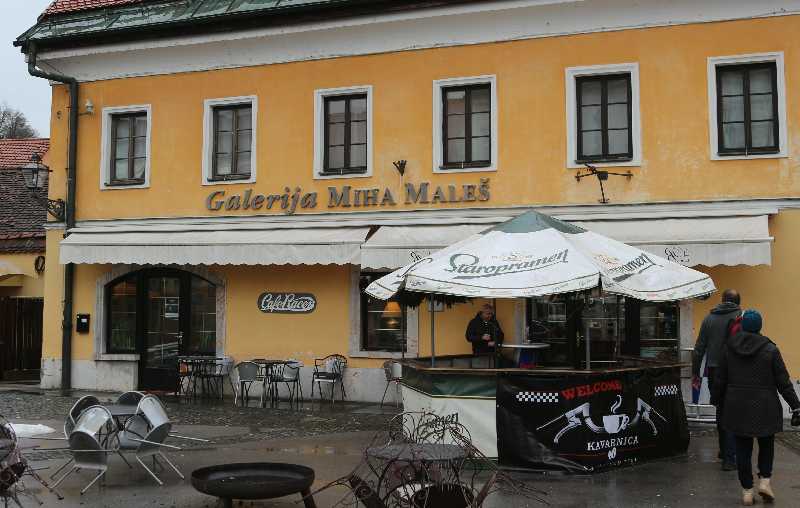
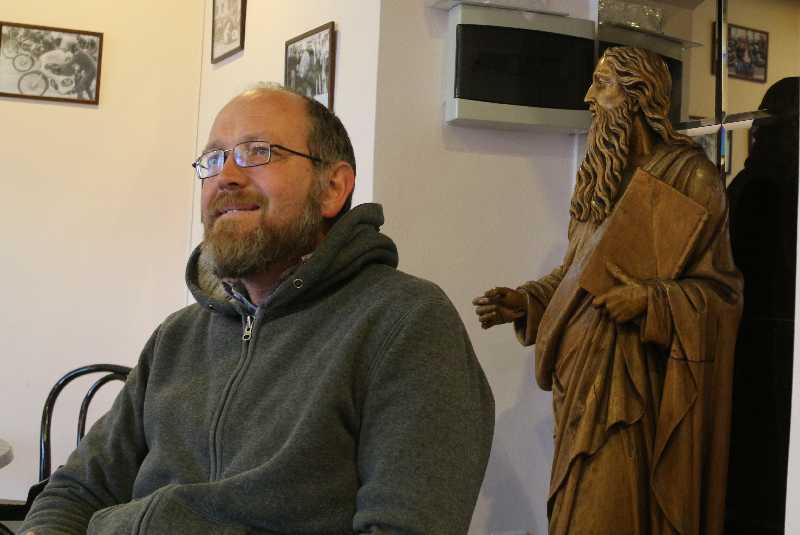
From there we went to see what Lake Bled looks like. It was raining, I don’t even have half decent pictures — but it looks like it can be stunning in summer. Which is probably why Bled features on the front page of so many travel guides to Slovenia.
It was around this point that we put Malpense into the GPS and realised that we didn’t have all day, and that we would have to put foot to get to the airport in time to catch our flight.
So Pieter put foot.

This is not what you want to see if you are trying to put foot. 82 kilometers before Venice, we were stuck here for maybe 40 minutes.

We ended up giving them the car with an empty tank, and there’s a penalty for that but… we made the flight. Well, we managed to book in our baggage in time, that’s the important thing. Then we got caught in a free-for-all in the passports queue, and when we finally boarded the plane got delayed for an hour but… we made the flight*.

Addis Ababa is not known for their tolerance of airlines other than Ethiopian. Because of being late, we basically walked in the one door and our the other without going through security (good) or duty free (bad). And then we sat on a mostly empty plane watching people arrive in dribs and drabs and hoping that the last group would be the last group so we could have plenty space on the plane. We ended up with plenty space on the plane. I slept through most of the flight. That’s how I roll.
So on Monday we drove out to Murska Sobota again.
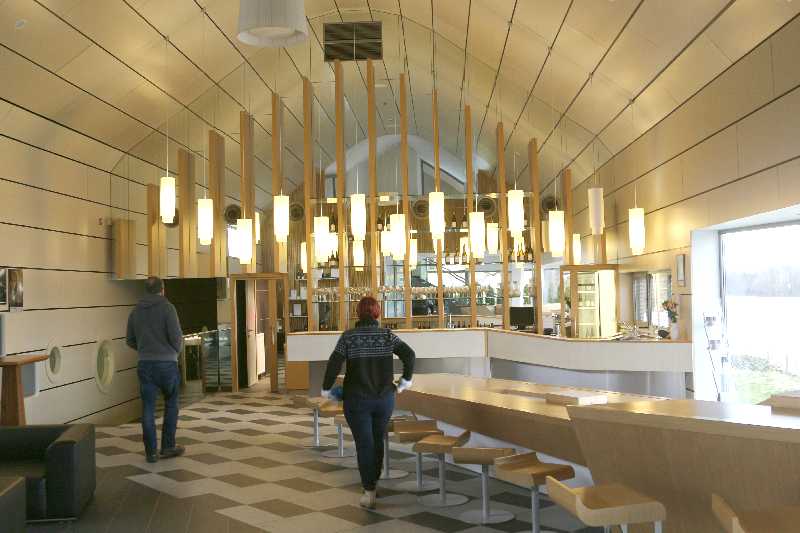
Our appointment was for one, so we dawdled around a bit, visited the Marof winery (winemaker, Pieter’s friend Uroš). Impressive place. Good wine, too.
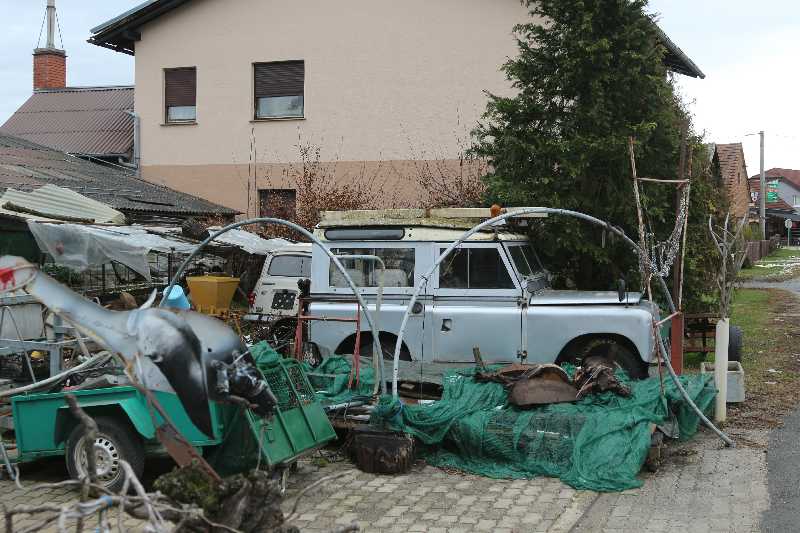
This little Land-Rover lives with his mate the Renault and a bunch of other junk at 5 Bogojina on the road to Dobrovnik.

Had lunch at the Gostilna Pri Lujzi in Dobrovnik, then kept our appointment with the lawyers, signed a bunch of papers, stuck some money in a bank, had some coffee, and drove back to Maribor, where it was pretty much pitch dark already. Walked across the bridge and went shopping at the InterSPAR, cheese and cold meat and wine and beer, called it supper.
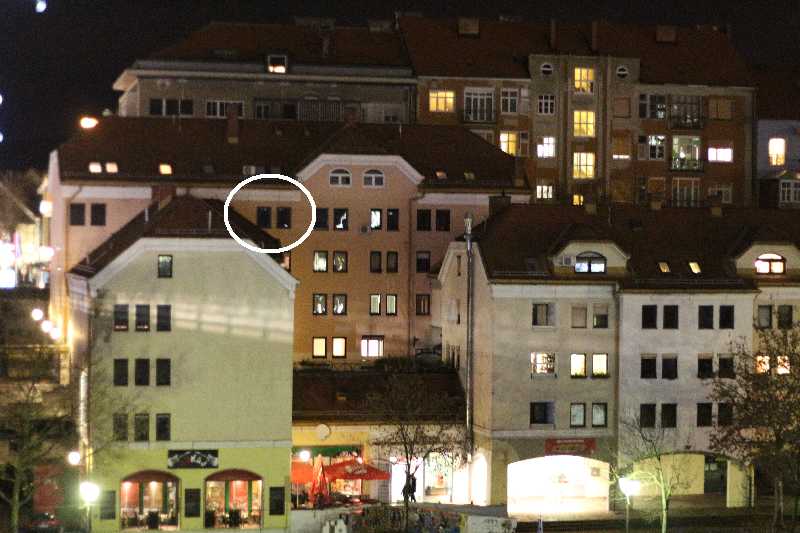
View from the bridge, that’s the windows of the place we stayed in.
As mentioned previously, Tanya insisted on coming along on this trip because she has a scrapbooking friend in Graz.

So the first stop was a rather large arts crafts and scrapbooking place, after which we found parking close to the Graz Cathedral and walked down Hofgasse and Sporgasse into the centre of town — which was packed.
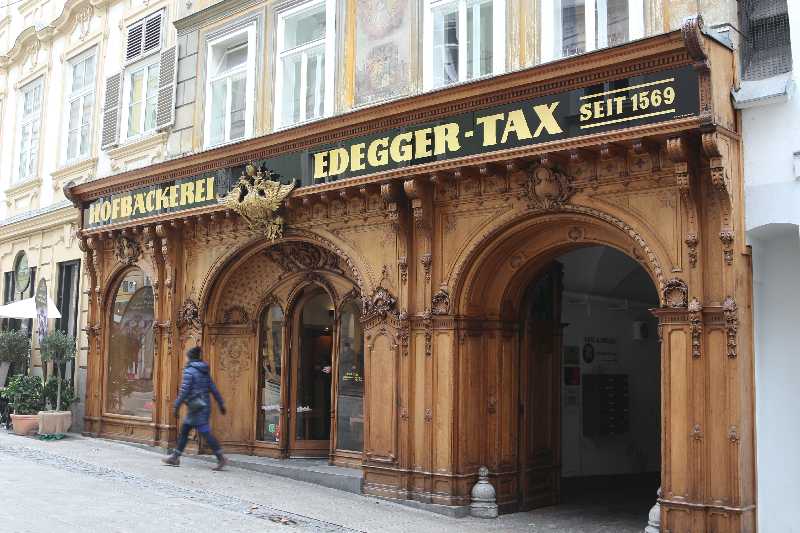

The weather wasn’t so great for photographs.
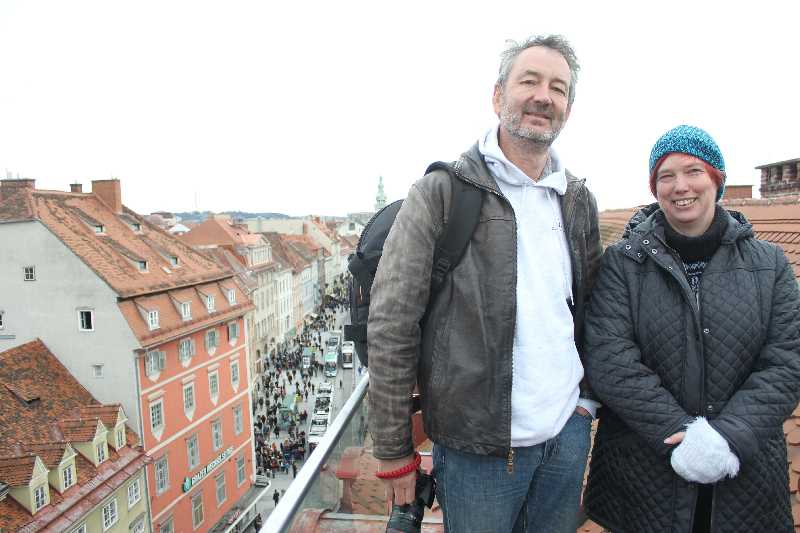
This is the view from Freiblick, a rooftop cafe above Kastner & Öhler. It was cold. The wind chill up there was bracing. There were people sitting outside having coffee and stuff. I suppose you get used to the cold.
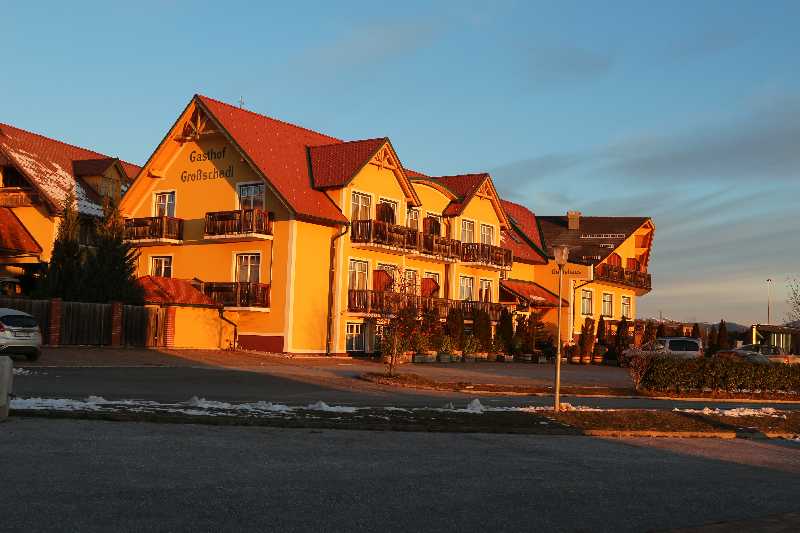
Our hosts had booked us into the Gasthof Grosschedl zum Kramerwirt which is close to where they stay, outside Graz. Slightly upmarket from what I normally pick, very nice of course.


… and back to Maribor, where it had snowed while we were in Austria.


Pieter found us a very nice place just around the corner from the main square, on the river. This is the view from there, facing south. The building on the left is the Maribor U Faculty of Medicine. We had the place to ourself — Pieter was still booked into his place for one night.
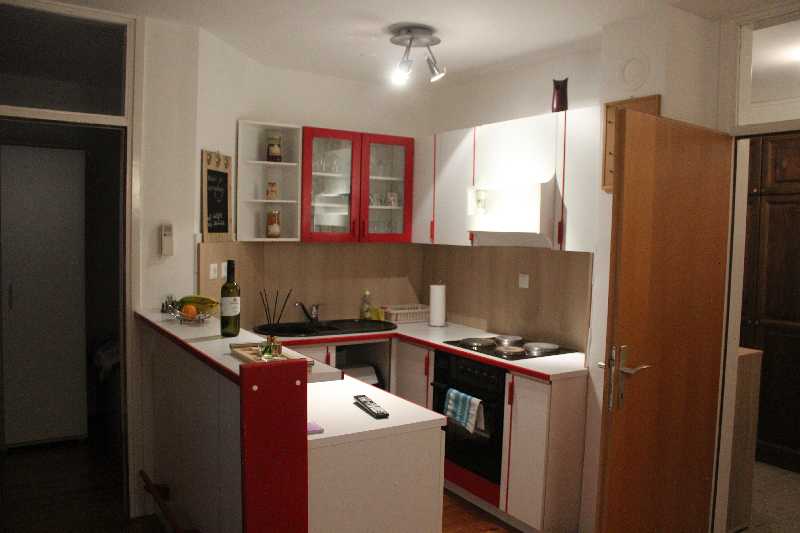
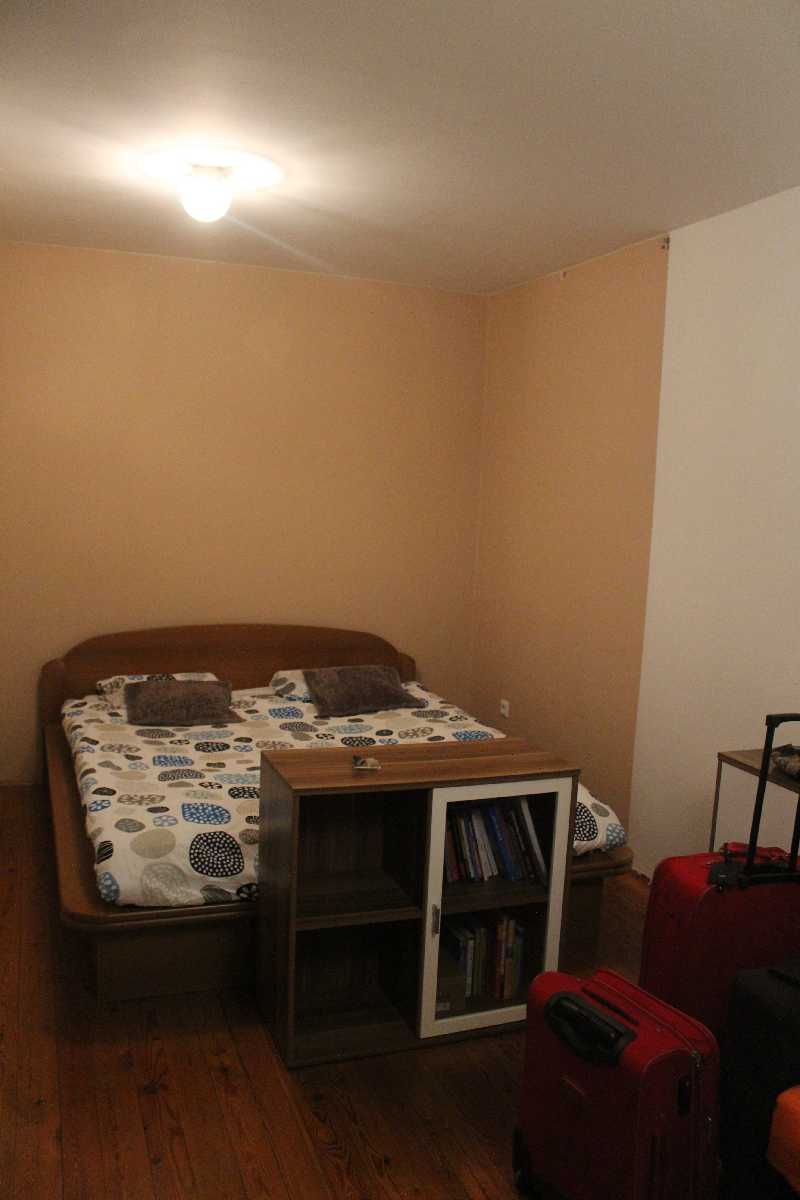
Friday is market day in Ljubljana. It’s not huge in winter, it’s apparently stunning in summer. We went to have a look anyway.

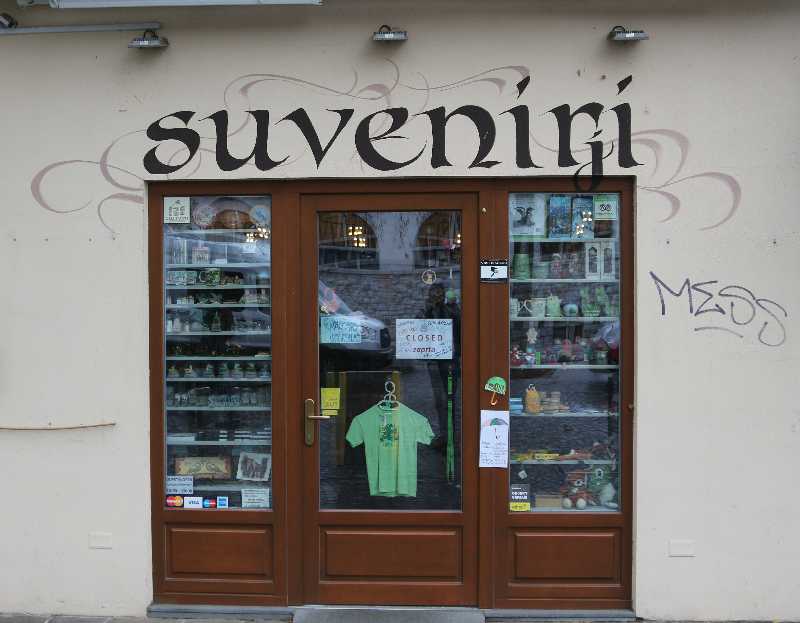
… Novelti, Paarti Triicks (what?).
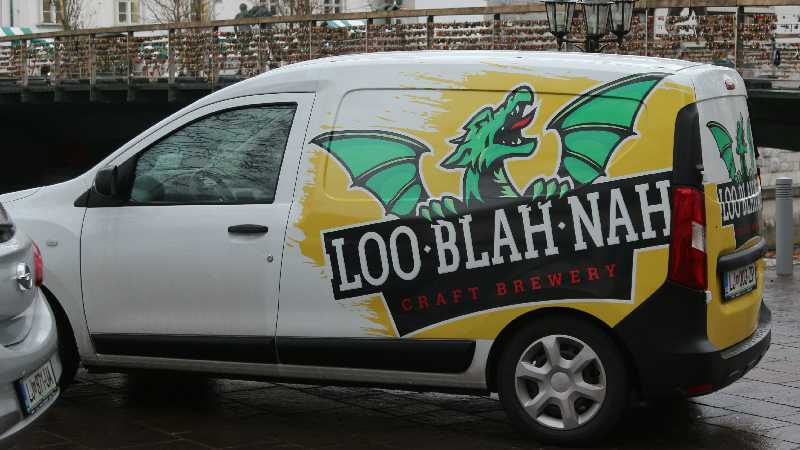
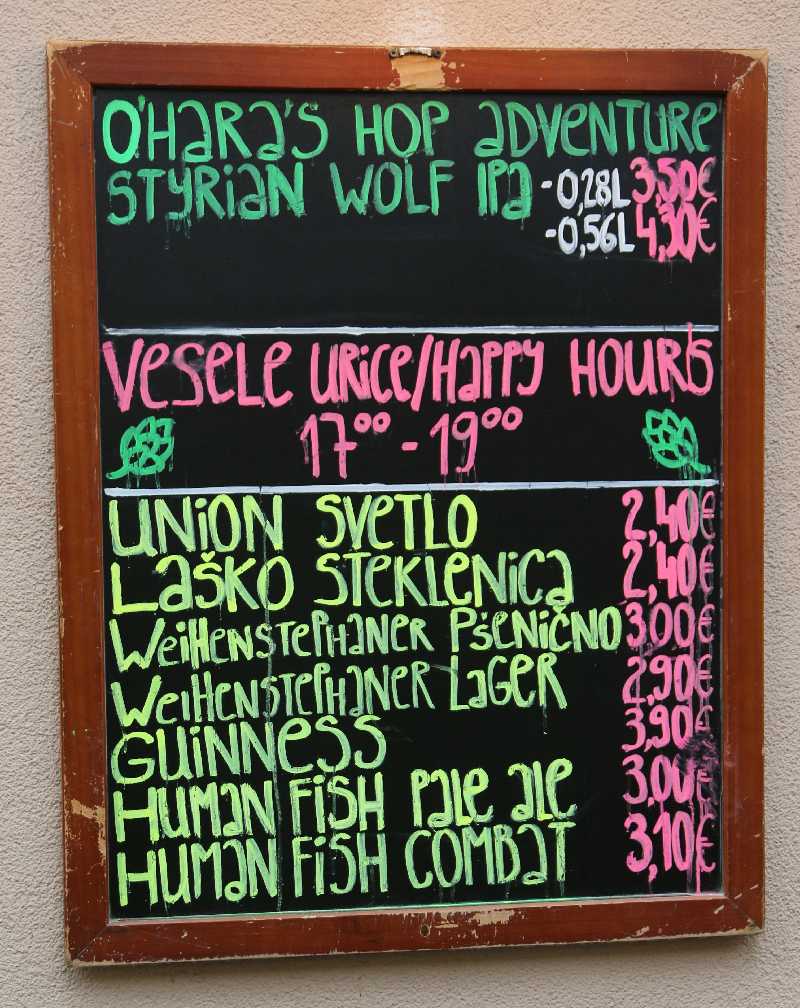








And then we were off to Maribor.

Got there, went looking for free wifi. You know the story.

The Kavarna Isabella looked good — it’s hard to see at this resolution but the top Vinarji is Marof — more on this later. Pieter contacted his landlord, walked over the bridge to go find the place (walking being easier than finding parking), came back and we went to drop him off.
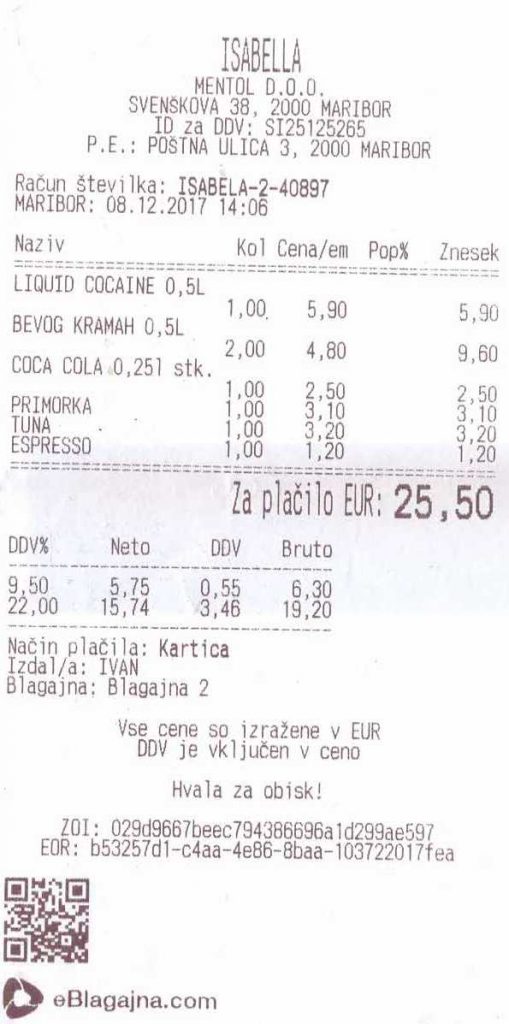
(Liquid Cocaine is IPA — beer from Hungary. Pretty good beer too, but King’s Blockhouse is better).
Then we took the car and went off to visit Tanya’s friend Irit in Graz for the weekend, leaving Pieter stranded in Maribeer on a craft beer weekend with nothing to do but hang out with his friend Uroš and partake of the fruits of the country. Shame.
So this is what we actually came for — go to Murska Sobota, sign some papers, do some stuff, sign some more papers, then wait. Maybe if something happens, sign some more papers on Monday, then go home.

Got to the lawyer’s offices in Murska Sobota and they were nowhere near ready for us. Still had to arrange a translator and all kinds of stuff. Arranged to go back there on Monday, went for some sightseeing towards Ljutomer. It was a rainy day so we didn’t take many photographs.

Ended up at the Smolkovic* place for lunch. Yes, Pieter knows the people, he’s been there before (fairly obvious that they’re our kind of people, if they put wine in litre bottles with crown caps). Met Primož, Robert was out somewhere.
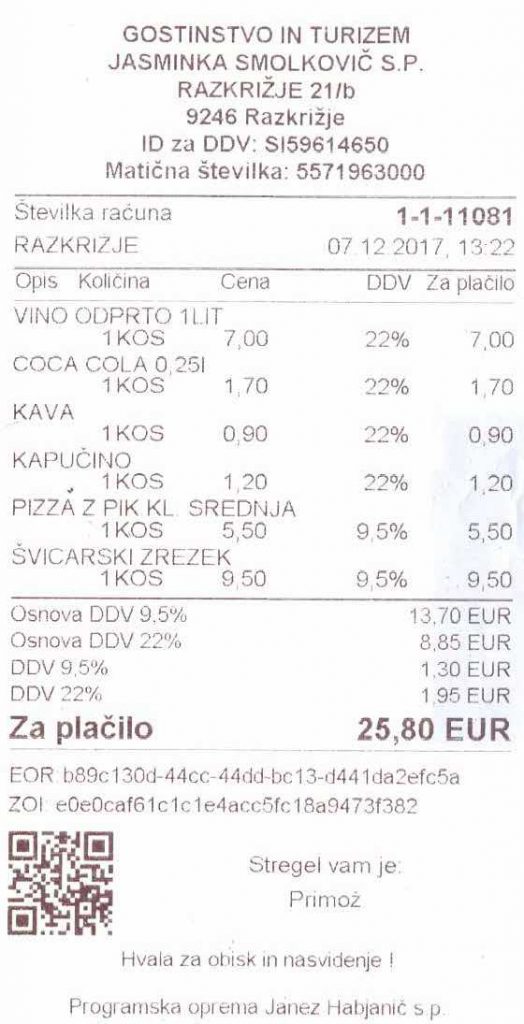
Švicarski zrezek is Swiss steak. Pizza is pizza everywhere. There was enough to go around.
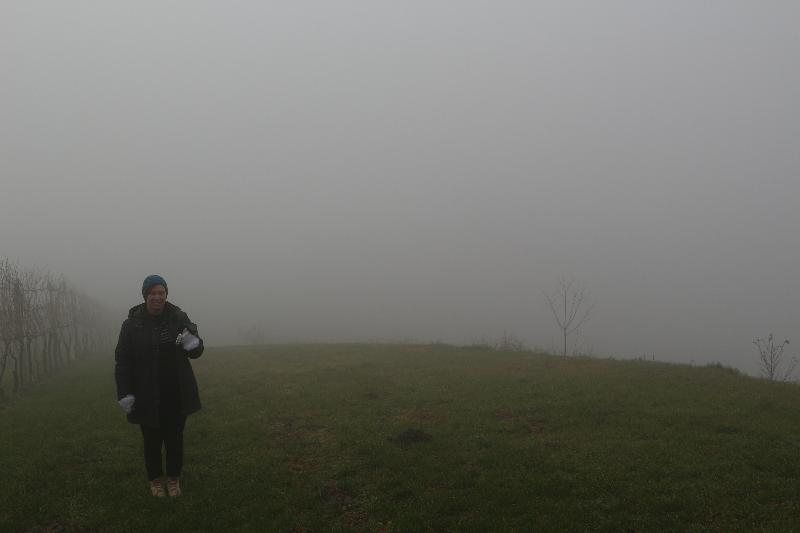
Went sightseeing. Look at that view.
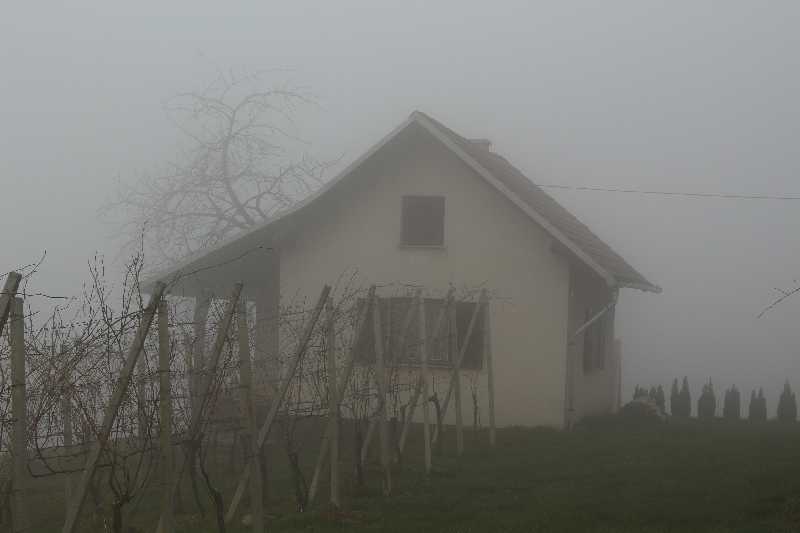


Of course Tanya found a friendly cat.

Drove back via Ptuj. Like many towns it has a castle up on a hill. Golden hour, half past three in the afternoon. The days are not long in winter.
Meanwhile we had gone shopping at the Tuš. Bought wine. More than enough wine… I thought. But first we went for a couple of beers. After that, Pieter reheated what was left of the mixed grill, and we started tasting wine.

These are the corpses, photo taken the next morning. OK, the Refošk was not empty, the others… were. Three of us. Tanya complained that Pieter had snored all night long. He probably did, Idunno, I was fast asleep.
(Pieter picked us up in Venice)
So I stuck the GPS to the window, told it to find Ljubljana, and off we went. We thought we might end up in Trieste, do lunch there, but the GPS had other plans so we got to Ljubljana at around 1500.

Dragon bridge.

Butcher’s bridge.
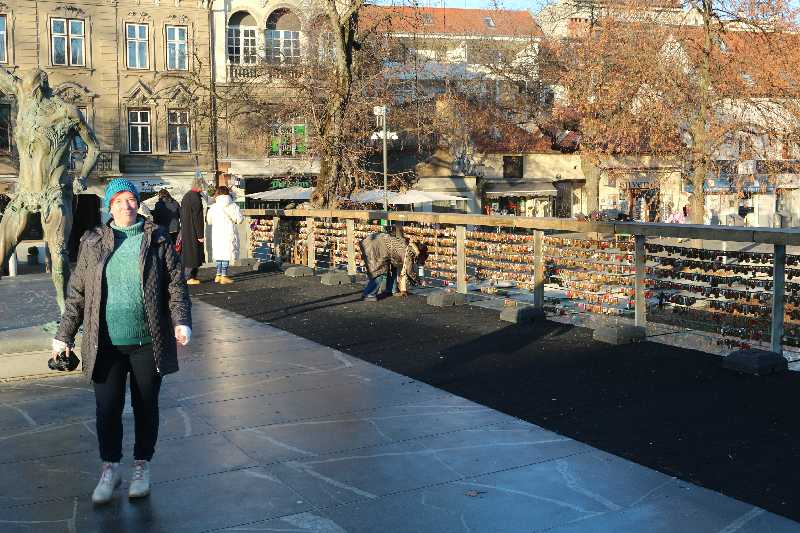

Went searching for free wifi, found some at a vegan place close to the Butcher’s bridge. They had unfiltered Union, we had a good time.
(We needed the wifi for Pieter to get the address he had AirBNB’ed. I scribbled a map off of Google Earth, but fortunately my GPS had the street in memory, so we found it without having to resort to notes. Right next to the Calimero Caffe Šiška where we got some more free wifi, contacted our hosts. Had beer anyway. Then went to see the place*. Very nice).
By now we were getting hungry. Vegetarian meals only go so far. Google Maps was consulted. It told us the closest real food was at Gostilna Keršic, a Serbian place on Celovška, so off we went.
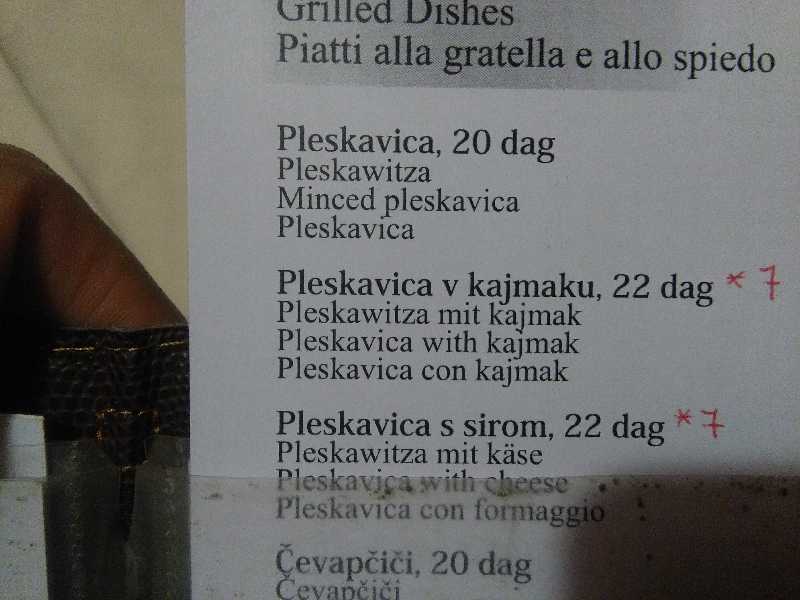
The menu is… interesting. Four languages, being Slovenian (“v”), German (“mit”), English (“with”) and French (“con”). Still trying to figure out what Pleskavica and kajmak are (kidding. Pleskavica is a burger patty and kajmak is a funny type of cheese. Courtesy of Google after the fact).
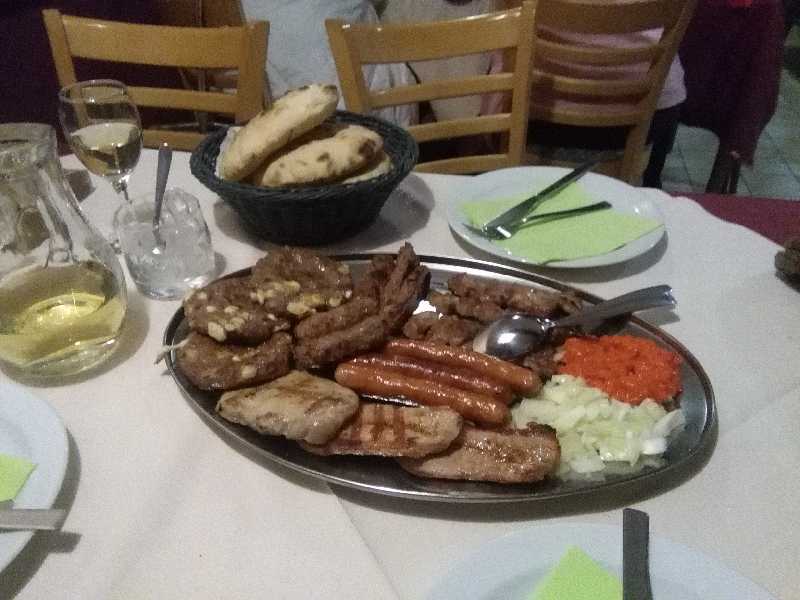
Go big or go home. Pieter thought he’d organised a mixed grill to share, we ended up with three of everything. Hamburgers sausages pork steaks sosaties rolls… there was also chips. And salad, I seem to recall… the leftovers lasted us a good long time. The wine was pretty terrible though. They had some white from 2001 “very good”. Ja, erm, no thanks.
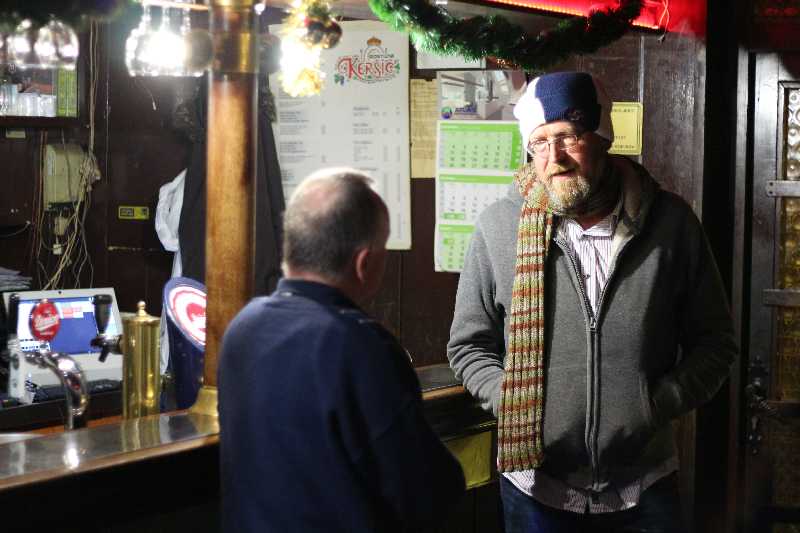
We went back to Calimero Cafe Šiška where we had beer. Lots of beer. Tap ran dry so we switched to bottled. I had fun playing with my 50 prime
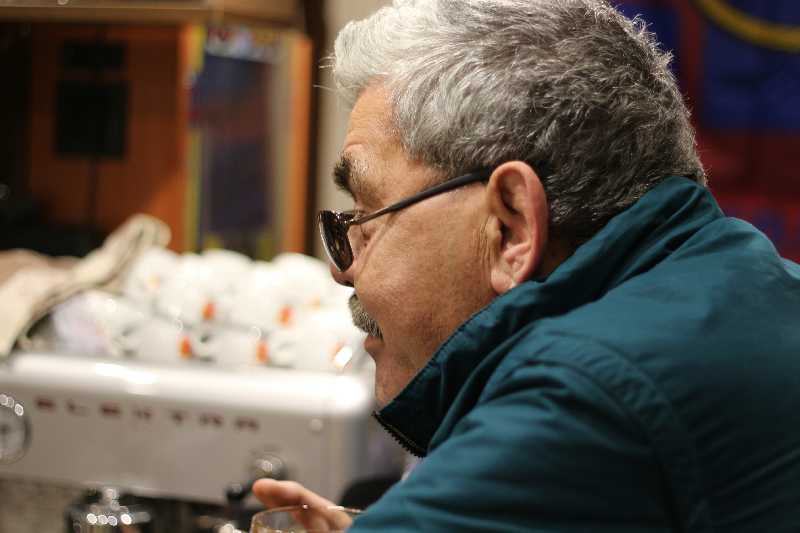
Miloš.

Pieter.
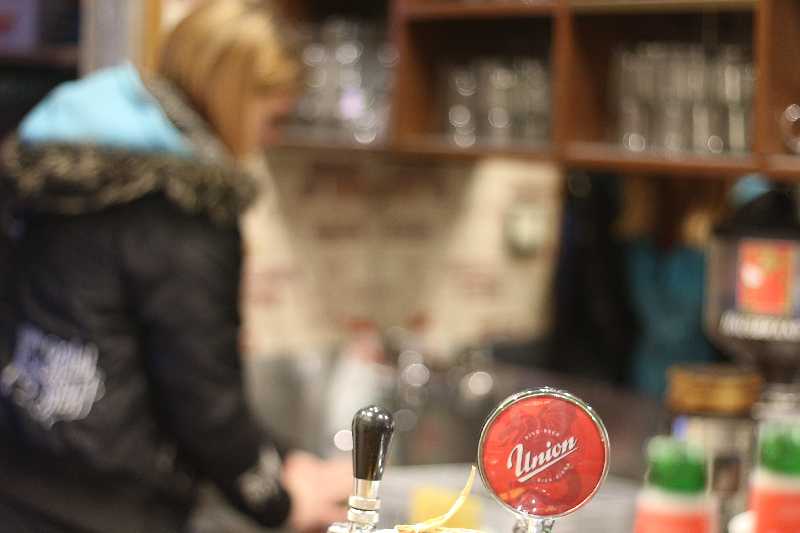
Union.

Kaja.

Bottles.
(Pics all straight off the camera, resized to 800x, no editing. I love my 50 prime).
* Note that the “free parking” is on the street where-ever you can find it.

What can I say about Venice? It’s different. It’s touristy. One probably has to see it, one definitely can fall in love with it. Although I suspect one can also fall out of love with it quite quickly in the tourist season.

This is is the Rio Terá San Leonardo just down the street from our room, at nine in the morning. The Rio Terá San Leonardo is the main thoroughfare from the station down to the Strada Nova and probably the easiest way to walk all the way down to San Marco.

We went the other way. This is the view northwest-ish from the Guglie bridge.
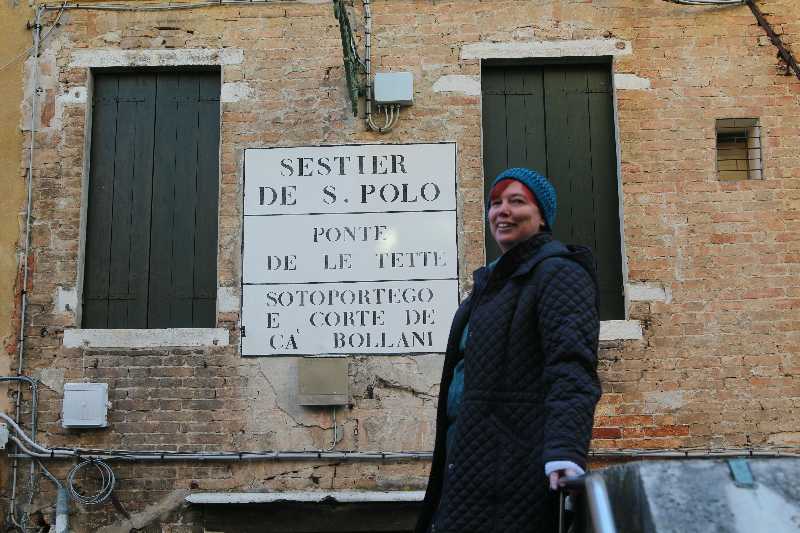
It was too cold for that.

I had pre-booked a trip to Murano Burano and Torcello, so that’s what we did.

I don’t know what the shiny rhino is doing next to the Biblioteca di Studi Adriatici. Google is not much help either.

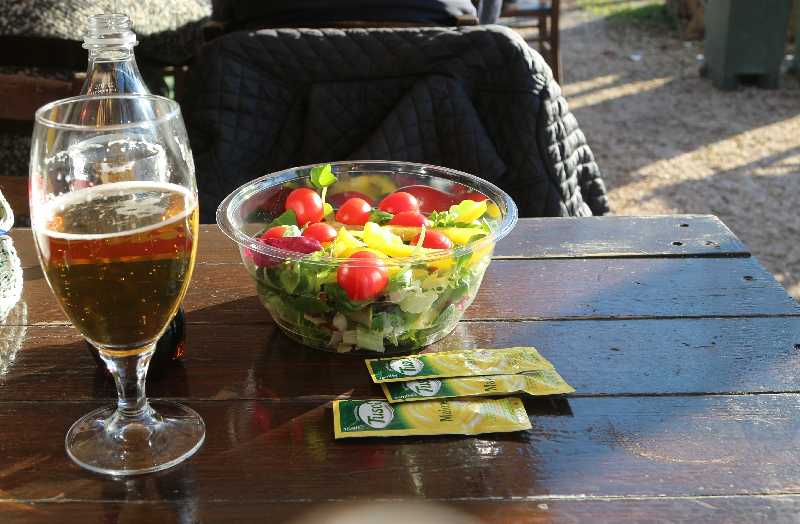
We were not much interested in the really old church on Torcello so we rather had lunch at the Taverna Tipica.

On the way back via the Strada Nova Tanya stopped at the Lush shop.

Tanya wanted pizza and Ae Oche was on my list, but they were closed, so we googled a bit and went to Gino’s. No complaints. Ended up drinking wine at an Irish pub (!)


The next morning we went for a walk through the (original) Ghetto. Had breakfast at Trattoria Bar Pontini on the canal, same place we had wine the night before — Venice is not big.
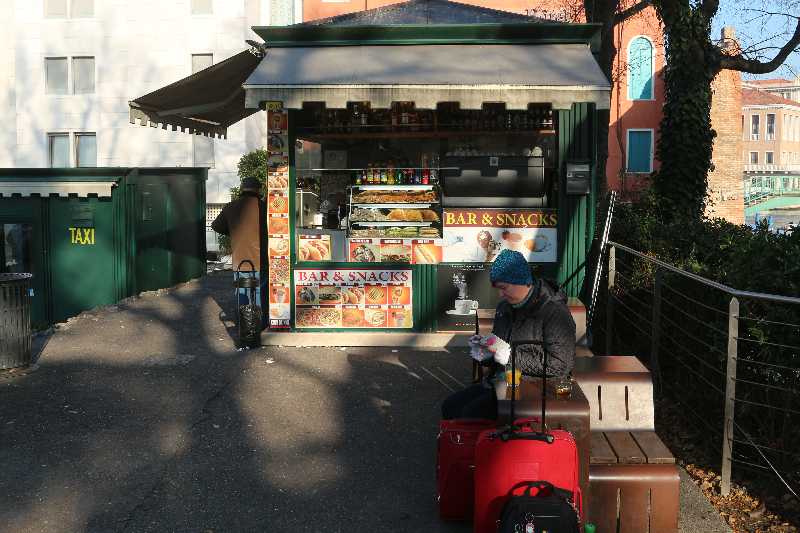
Collected our bags, walked past the station to the bus stop, waited for Pieter. Waited a long time. It was cold. There might have been spritzes involved.
I expected to wake up to the typical noise of a city but Federico’s place is wonderfully quiet. We were up early anyway, that’s how we roll. Rescued our car from the parking garage and made our way out of Genoa (I keep wanting to type “Genua“), heading south — autostrada to Piana and from there the back road to Cinque Terre. It wasn’t the best time to visit but we knew that — think of it as a fishing expedition*.

Monterosso al Mare, where we had lunch (well, Tanya had a sandwich which ended up being enough for both of us). Looks like the kind of place I’d enjoy spending more time in.

I discovered that my cellphone has a panorama mode.

La Spezia. One of Italy’s biggest Naval Bases.

Still playing with the panorama mode.
It was getting late so I started pushing for Venice. Autostrada, no more sightseeing. Reached Venice Airport at a quarter to five. Handed the car in, boated to Guglie (but we’re not talking about that).
The room we AirBNB’ed is in the perfect location. Top end of Calle Colonna, next to Alla Corte Ostinati. You have to turn into Calle del Magazen, something Google Earth didn’t tell me, so we had to hunt the place down. No problem, Venice is tiny. The bed was the most uncomfortable one I’ve slept in maybe ever. But the location is great.
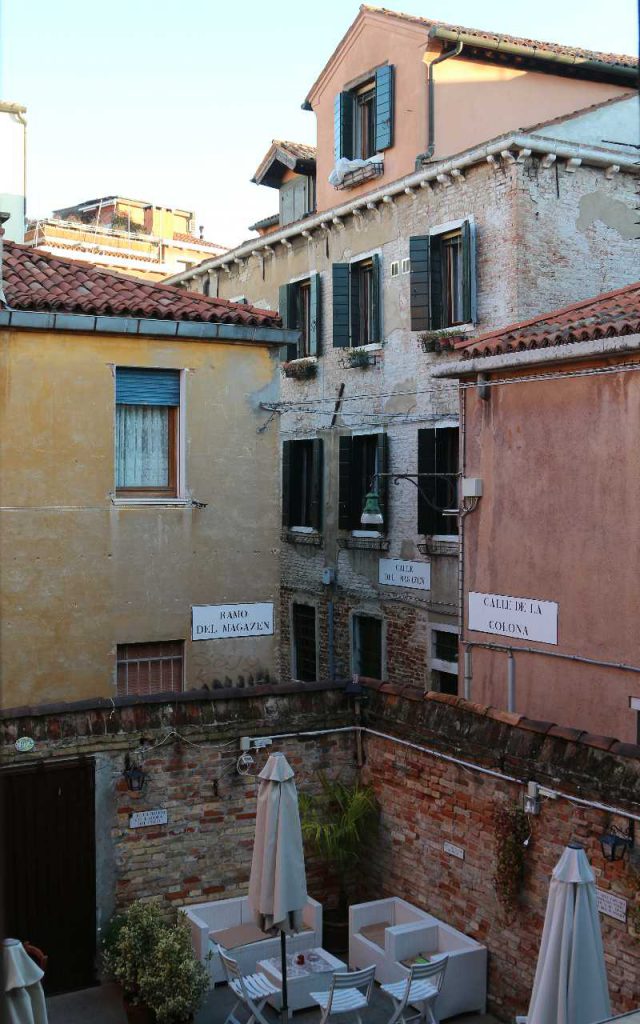
View from our window. Alla Corte Ostinati below, dogleg to Rio Terá San Leonardo straight ahead.
(Backdated as always)
So an opportunity presented itself for me to join my brother for a quick trip to Slovenia via Italy. Of course Tanya was not going to stay behind, not with Slovenia being close to Austria and Graz being where she has a scrapbooking friend.
Pieter had other commitments so he would fly out on the 5th but we decided to use the weekend and fly out on Saturday the 2nd. Ethiopian Air, Cape Town, Addis Ababa, Milan. We figured we could take in some Italy before going on to Ljubljana, Maribor and Graz.

Rietfontein se pan from the air.

That shiny dot north of the Orange river is Khi Solar One.

La Spezia from the air.
Got a little Citroen C1 from the airport, headed off to Turin because there’s a museum there.
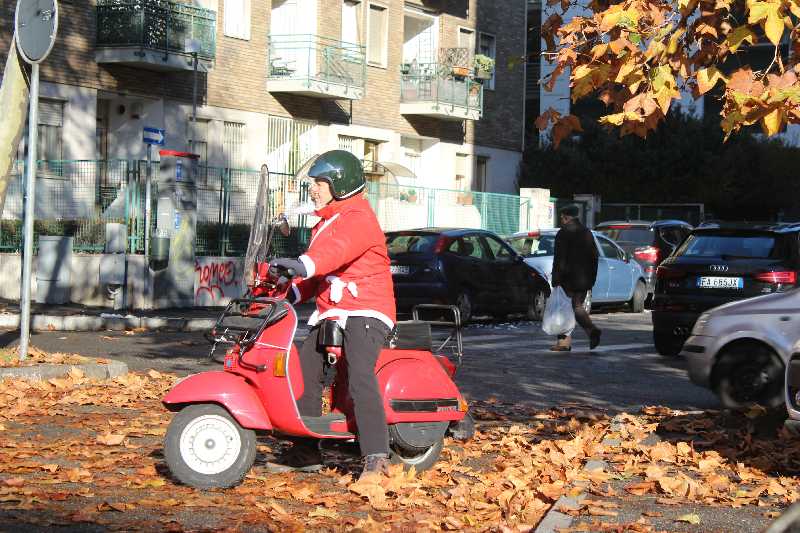


Didn’t get to see it. Couldn’t get close because of all these crazy people in Santa Claus costumes. These are only a few, there were thousands of them. We still have no idea what it was all about.
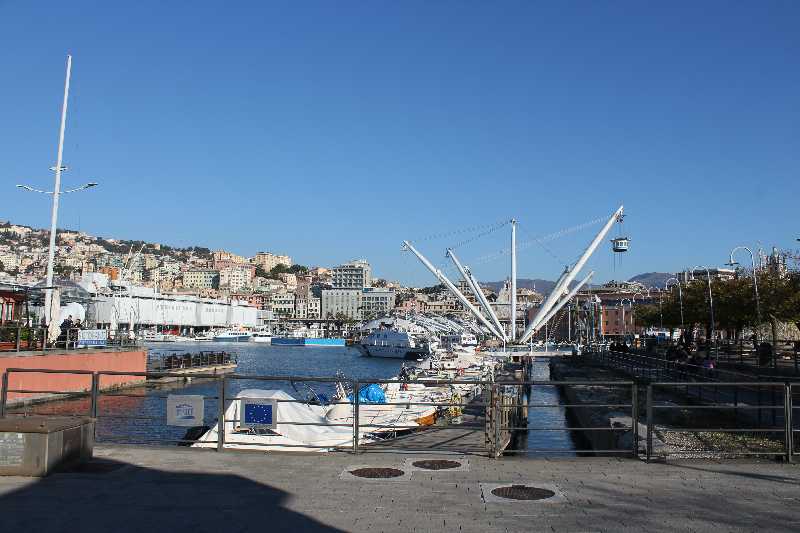
So we went to the aquarium in Genoa, which is either the largest or the second largest in Europe. It’s bloody expensive for sure.


They have some impressively large tanks, one with a whole bunch of dolphins, the other with two Manatees. Hoooon.
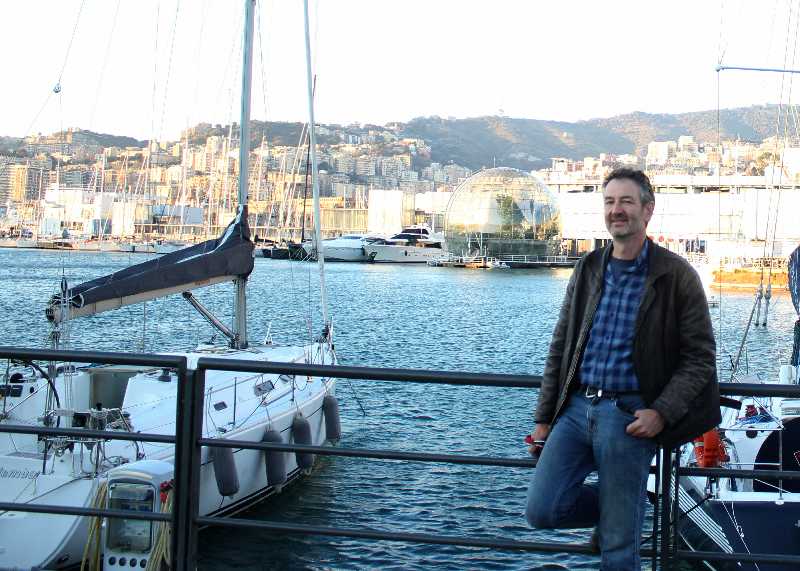
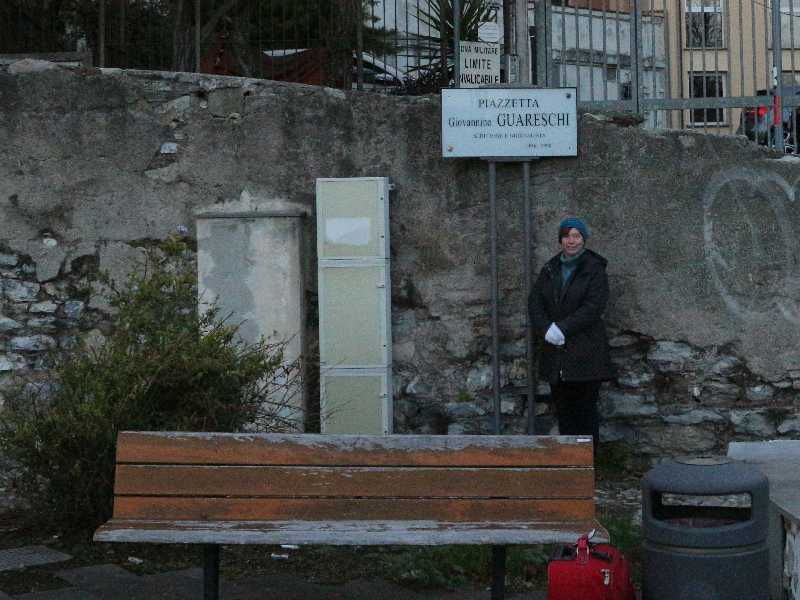
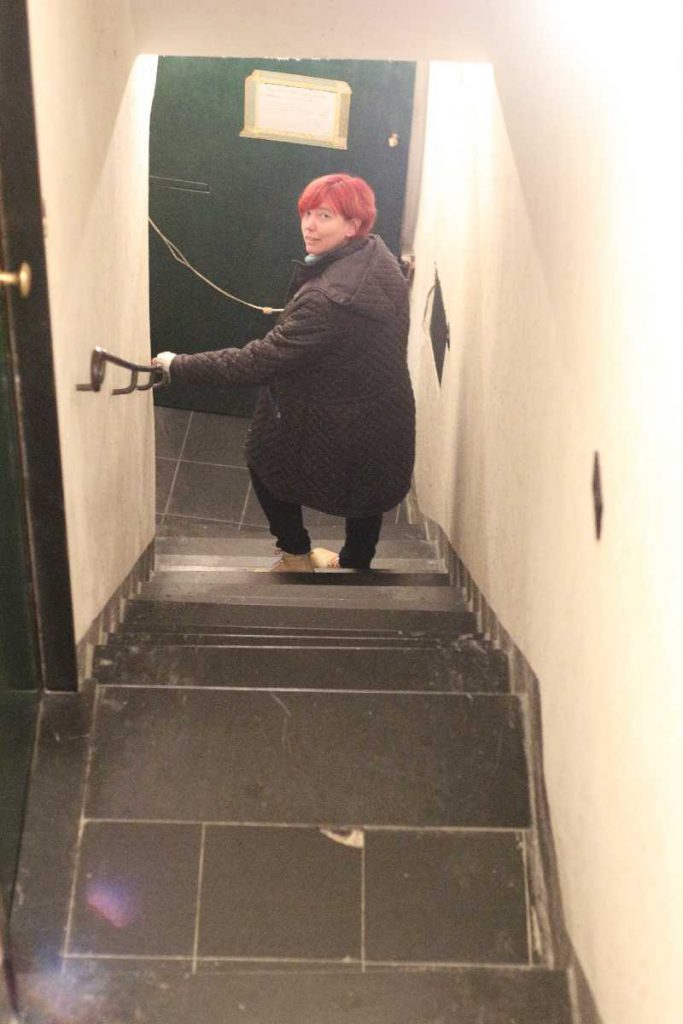
We AirBNB’ed with Federico, really a nice place in old Genoa with rather steep steps.
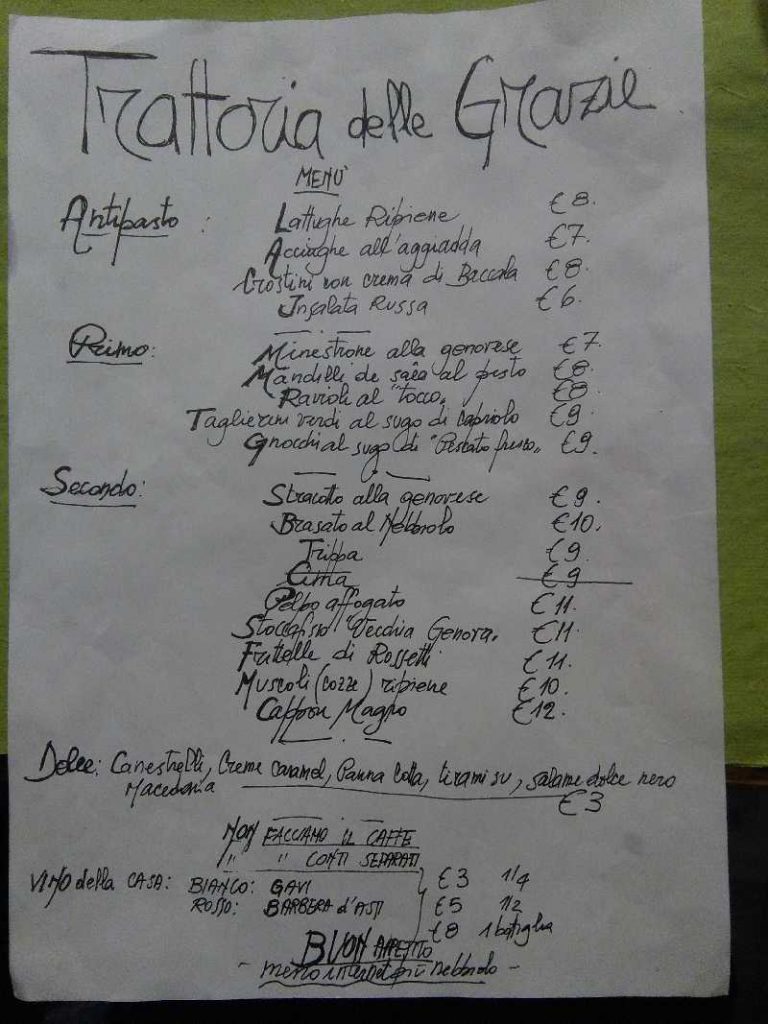
Federico directed us to Trattoria delle Grazie which is really good.We were not nearly hungry enough. Had the pesto and the ravioli al tocco, both recommended by our host. I will definitely try to make it out there again to catch up with the rest of the menu.